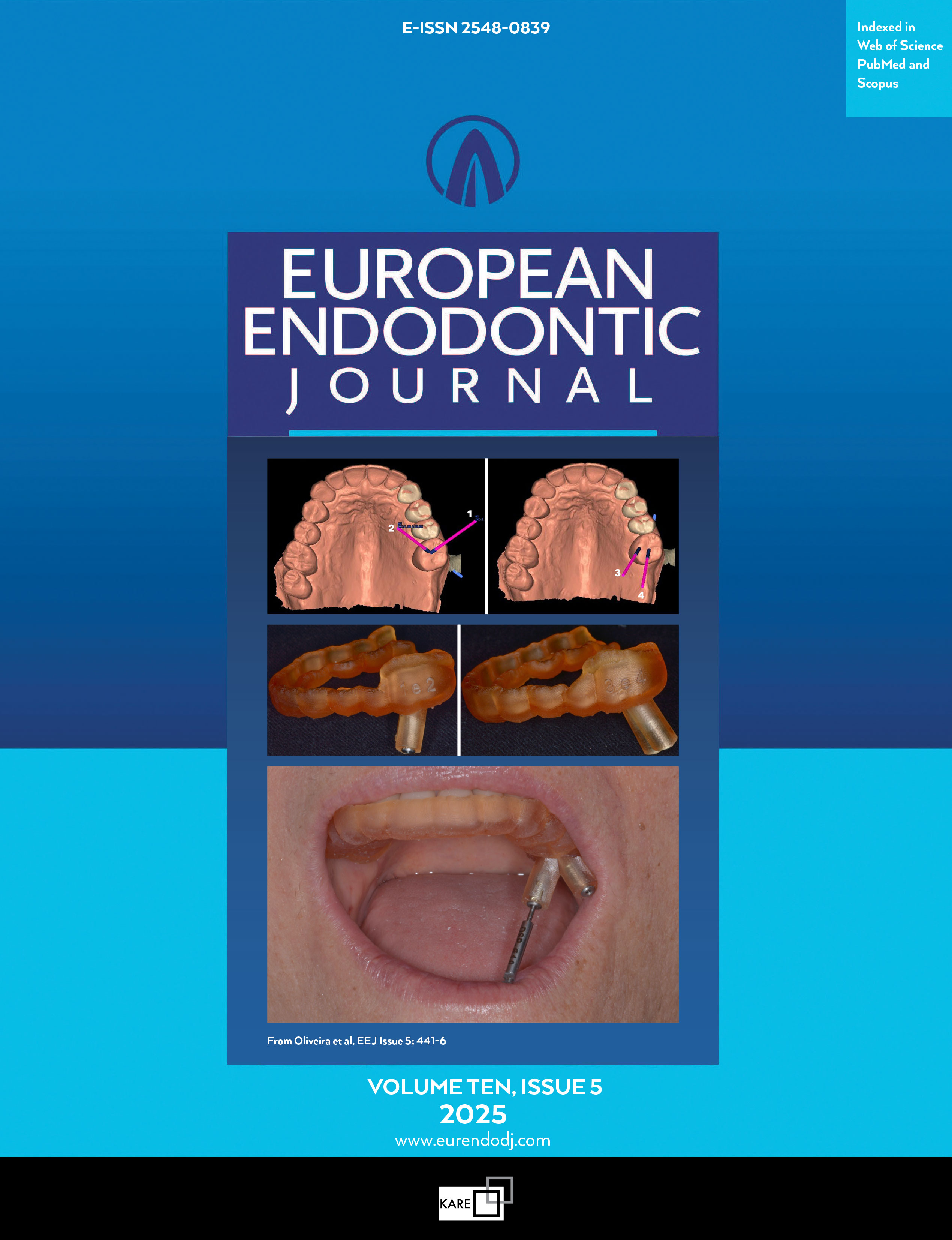Metrics
2024 IMPACT FACTOR
5 year Impact Factor
Eigenfactor Score
2024 CiteScore
Journal Citation Reports
(Clarivate 2025, JIF Rank)
Effect of Disinfection Protocols on Bacterial Reduction in Mandibular Molars
Helder Fernandes de Oliveira1, Luan Carlos Gomes Teixeira1, Ismael Fernandes Da Silva Júnior1, Francisco Ferreira Da Cruz1, Hellen Cristina Silva1, Alex Da Rocha Gonçalves1, Daniel De Almeida Decurcio2, Orlando Aguirre Guedes11Department of Endodontics, School of Dentistry, University of Anápolis, Anápolis, Goiás, Brazil2Department of Stomatology Sciences, School of Dentistry, University Federal of Goiás, Goiânia, Goiás, Brazil
Objective: This study aimed to evaluate the bacterial reduction effect of disinfection protocols used in mandibular molars infected by Enterococcus faecalis.
Methods: Eighty extracted mandibular molars were prepared and inoculated with E. faecalis for 2 months. The teeth were then divided into 2 control groups (n=4) and 4 experimental groups (n=18) according to the disin-fection protocol utilized: G1. WaveOne Gold (WOG), passive ultrasonic irrigation (PUI) and Ultracal; G2. WOG, PUI and calcium hydroxide (CH); G3. WOG, XP-Endo Finisher (XPF) and Ultracal; G4. WOG, XPF and CH. Bac-teriological samples were collected previously (S1), after preparation (S2), final agitation (S3) and intracanal dressing (S4). Microbial growth was assessed according to culture turbidity and UV spectrophotometry. Statis-tical analyses used the Friedman test for paired samples and Kruskal-Wallis test for non-paired data (p<0.05).
Results: No protocol eliminated E. faecalis effectively. The S2, S3 and S4 samples were statistically different from the S1 samples in G1, G2, G3 and G4 (p<0.05). Statistical differences were observed in bacterial reduction between G1 and G2 and G1 and G3 after the intracanal medicament (S4) (p<0.05).
Conclusion: The combination of WOG with PUI and CH disinfection protocol showed higher percentages of bacterial reduction.
Manuscript Language: English
(483 downloaded)


